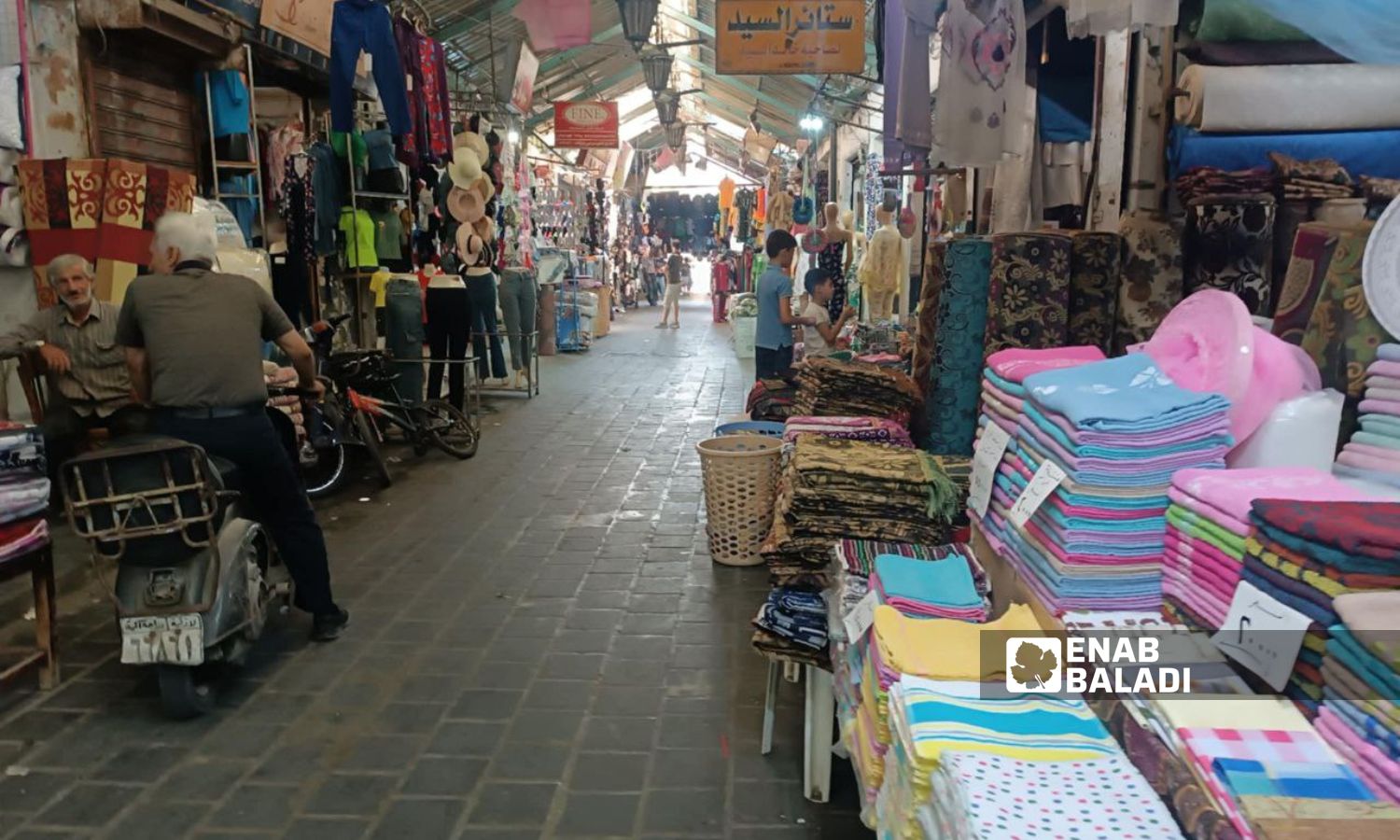



Latakia – Linda Ali
Jableh residents, both from the city and the countryside, flock to the covered market, which is known not only as a historical market but also for offering a wide variety of popular goods at low or moderate prices.
Despite the wave of price increases that has hit most goods, the market shops contain the cheapest types of clothing, household items, and other personal needs. It is one of the few markets where you can find a piece of clothing for just 20,000 Syrian pounds (1 USD ≈ 14,800 SYP).
Children’s clothing under 5 years old range in price from 25,000 to 125,000 SYP, women’s jeans cost between 75,000 and 150,000 SYP, pajamas between 100,000 and 175,000 SYP, cotton t-shirts between 60,000 and 100,000 SYP, while suits and clothing for veiled women range between 100,000 and 200,000 SYP.
What sets the market apart is that these prices are preliminary and open to negotiation. Bargaining is a hallmark of this market, often reducing the price of an item by 5,000 to 20,000 SYP depending on its price and quality.
These prices are significantly lower than those in other city-center shops and are considered acceptable compared to the minimum government salaries, which in Syrian regime-controlled areas is 279,000 SYP (approximately 18.7 USD).
In the past, the covered market was known as the “egg market” because rural residents would come with baskets full of eggs and exchange them for market goods without using money, as was customary among the locals.
The covered market stretches alongside the Roman theater from the seaside and has two entrances: one from the park side and the other opposite the fish market on the road leading to the corniche.
At its entrance, shops sell spices, tomato paste, and pepper paste, along with other pantry needs. Corn and bean carts are also widespread.
With the start of the Syrian revolution in 2011, many rural residents hesitated to visit the covered market due to sectarian tensions, which some accuse the regime and some extremists in the city of inflaming for their interests.
However, this situation did not last long, and within three years, the market gradually returned to its normal state, reaching the point where Jableh city has returned to how it was before.
Jableh residents view the covered market as a symbol of memory and heritage, being among the city’s oldest markets. It has maintained affordable prices, catering to both middle and lower-income brackets. Meanwhile, the wealthier individuals shop at city-center stores where Turkish goods, priced at hundreds of thousands of pounds per clothing item, are readily available.
Fatima (40 years old) has been visiting the covered market for the past 20 years. As a young woman, she used to go there to buy clothes, recalling that she would buy jeans for no more than 225 SYP and t-shirts for 125 SYP, sometimes just 90 SYP, which fit her budget of around 500 SYP.
She added that she would use the remaining money to buy shoes for no more than 100 SYP, with enough left over for transportation and a quick bite to eat.
Today, Fatima, who lives in the al-Farwah neighborhood of the city, still goes to the market to buy all her household essentials, including provisions like mallow leaves and pepper paste, as the prices are very cheap compared to other shops. She also buys her clothes there, though she has not been able to convince her young daughter to do the same.
She mentioned that the younger generation is different, and young women now brag about shopping at well-known clothing brand stores. Admitting that their clothes come from the covered market could subject them to bullying.
The covered market is considered one of the city’s most important historical landmarks, featuring some domed shops, indicating that its construction dates back to the Ottoman era, according to Masoud Bediwi, the Director of the Jableh Antiquities Department, in a statement to the local Al-Wahda newspaper.
He mentioned that some of its shops were built in the 1950s and that its construction aligns with the city’s layout during the Mamluk era. He also noted that Jableh’s architecture predominantly features Mamluk Ottoman styles.
if you think the article contain wrong information or you have additional details Send Correction